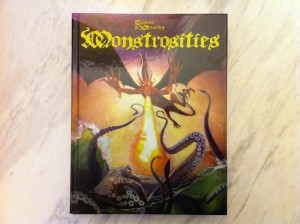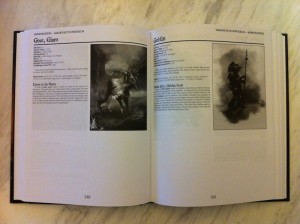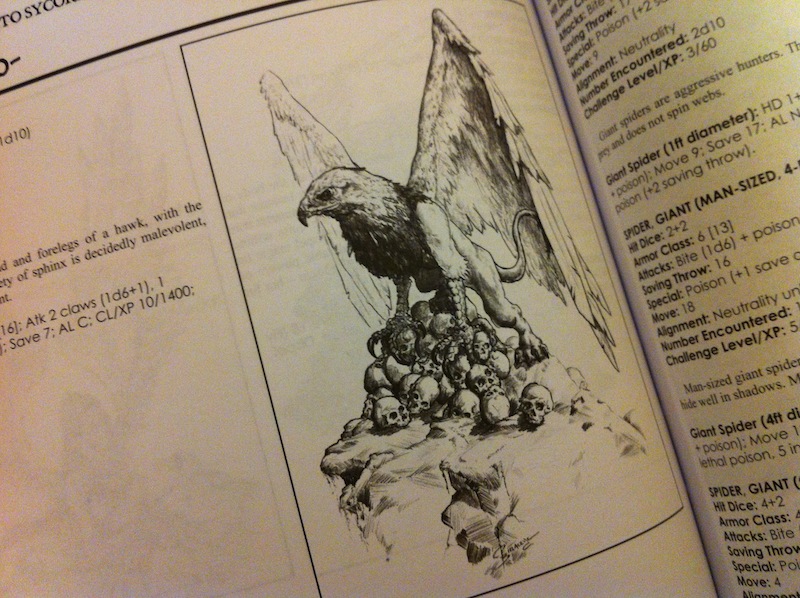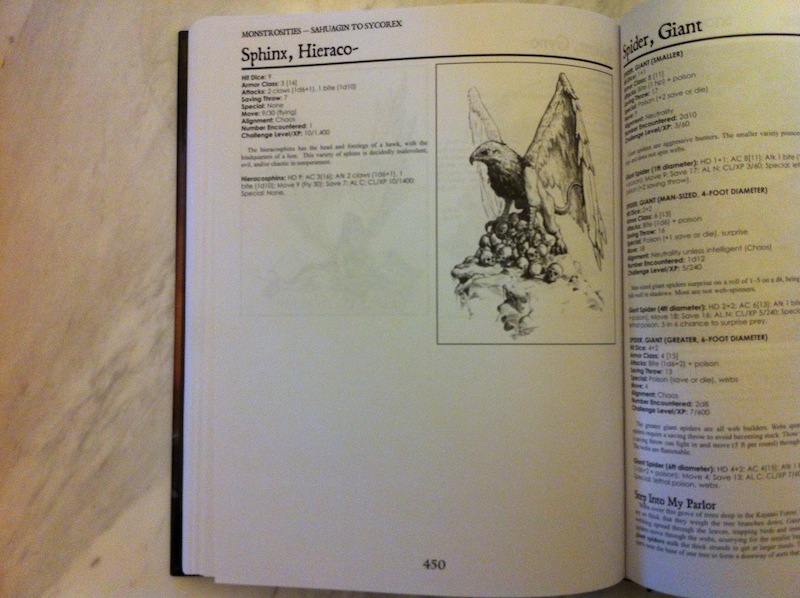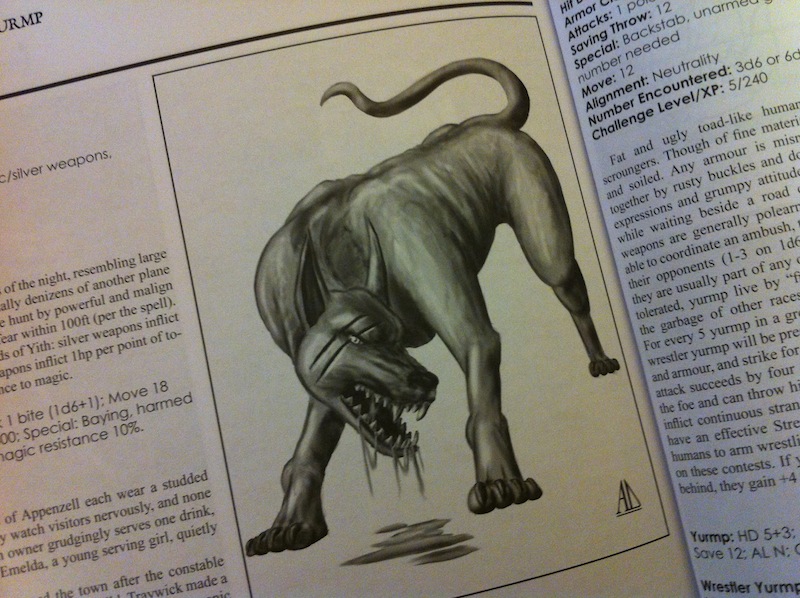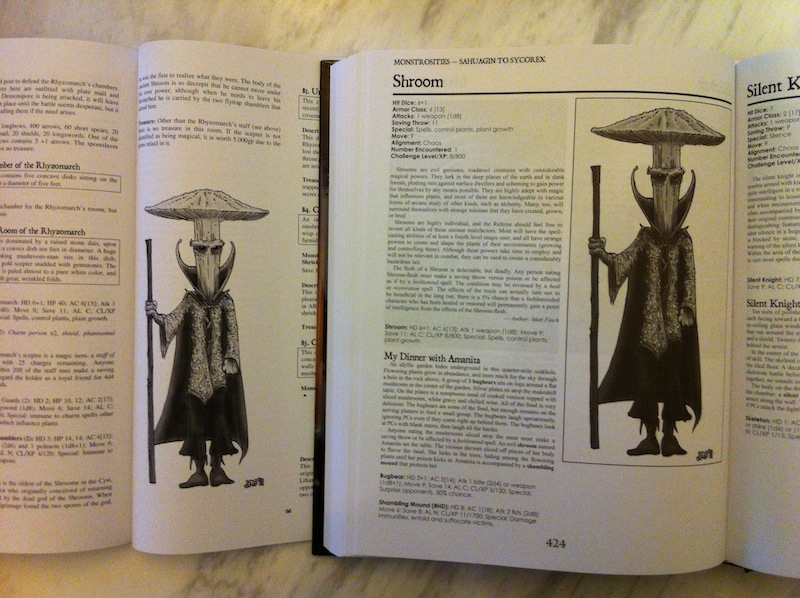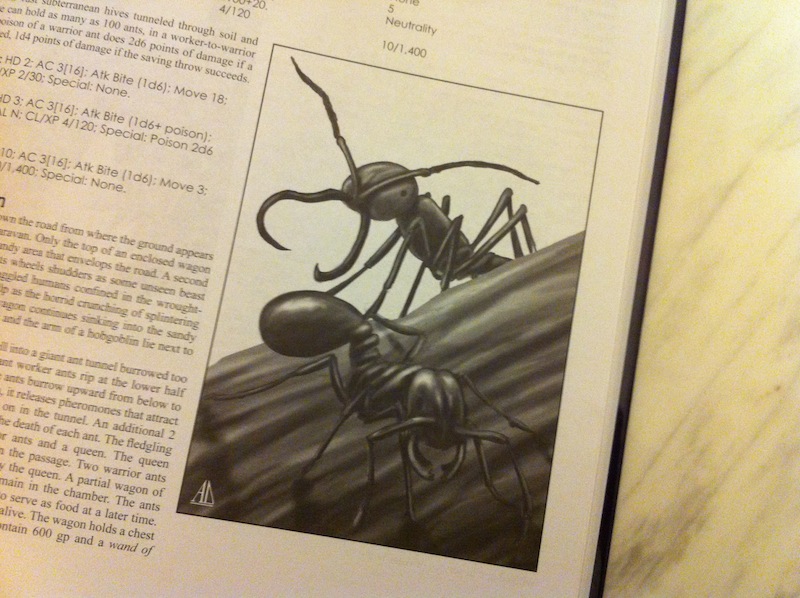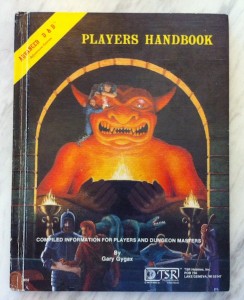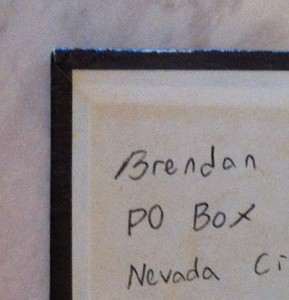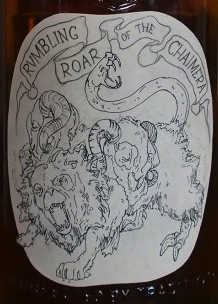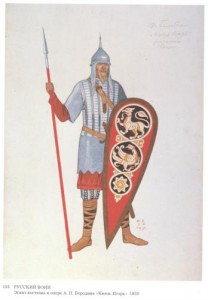In myth, monsters and treasures are often unique. For example, not a medusa, but the medusa. Not a sword +1, but Excalibur. The advice to give items or creatures a backstory to increase interest is sort of obvious, but what if this principle is taken further so that most things are not only named and distinct, but also unique? Taking this approach also serves as a self-discipline mechanism for controlling the supply of power within the game, by making magic items essentially take the place of artifacts.
I had originally wanted to sketch out an entire setting using this method, but that proved too ambitious, so instead I am presenting a suggestive miscellany. The basic model was to take each example element from the rule book (Swords & Wizardry WhiteBox), interpret it through the lens of the setting (often as a unique element), and then place it on the hex map. This also serves, procedurally, as a checklist for campaign creation. Since you are placing game elements on the map, it guarantees that you are focusing your preparation on things that will show up directly in play.
Based on this principle, there were two other seeds from which the setting grew: each magical staff became the symbol of office for one arch-mage (leading to 10 arch-mages) and the most powerful monsters became the gods of the setting. This was also partially inspired by the original Deities & Demigods (which is in essence a high-level bestiary) and the way Carcosa presented the great old ones.
The divinities, thus, are immanent. For example, Xelior is the efreeti. Hegombol is the dragon. Though they may be challenged and slain, if killed within their domain they will not be truly destroyed and will rise, full of vengeance, on the next day. The gods are not divine aspects of mundane monsters; there are no dragons other than Hegombol.
- Arudin, genie of the air, ruler of the open skies and patron of all who would remain unchained. Stats as djinni.
- Baalroch, ruler of HELL. Stats as baalroch demon.
- Garviagad, ruler of VALHALLA, the land in the sky above the southern seas. Honorable warriors are reborn in VALHALLA. Stats as storm giant.
- Gezarvalu Catastrophon, the many-headed, incarnation of chaos and destruction, worshipped only by the insane. Rises from the sea without warning and lays waste to all nearby. Stats as hydra.
- Hegombol the Volcano, terror of the northeast, the dragon. Demands, and is paid, monthly tribute from the town at the base of his mountain. Stats as red dragon.
- Xelior, genie of fire, slave to the arch-mage Azafont of the Brass Tower. Stats as efreeti.
- Yex the Colossus. Said to once have been the mightiest of the gods, until tricked by the arch-mage Luder Dreamwalker. It is said that Yex first taught humans the mastery of stone-craft and building. Luder destroyed part of the fabulous temple of Zumen, and while Yex was distracted stole his capstone, which was also his soul. Now Yex stands frozen, supporting the remains of the temple. Stats as stone golem if the capstone is returned. The realm of Yex is all lands above the sea.
There are 10 arch-mages, each of which possess one of the 10 staves of legend. The staff is not only a source of power, but also a symbol of office. Anyone who can claim one of the staves becomes a new arch-mage. The staves no longer have charges, but instead may be used any number of times. After each use, 1d6 is rolled and on a 1 the staff will not work again until the next moonset.
- Dedardima the Collector. She possesses the Staff of Absorption, and has peppered the known lands with bunkers and underground compounds, many of which she has forgotten about, in preparation for the final battle which she perpetually fears is about to occur. She is also known as the Doomsayer.
- Azafont of the Brass Tower. He possesses the Staff of Beguiling, and also ring of Xelior, the Efreet. The pleasure gardens of his estate are infamous.
- Gorbex. She possesses the Staff of Command. She dreams of killing all the gods and being queen of the world. She has a huge army.
- Sambasmyr the wanderer. She possesses the Staff of Healing. She was driven out of her tower by the betrayal of an apprentice, Cassadior, who also tried, and failed, to steal her staff.
- Aznix. He possesses the Staff of Power and delights in the struggles of kings and warlords. He will sell his loyalty to the highest bidder.
- Kokal the Undying. She possesses the Staff of Lordly Might and is ageless. She allows few mortals into her presence.
- Sathifor the Corruptor. She possesses the Staff of the Snake and is worshipped by the lizard-men of Neshistathelex.
- Luder Dreamwalker. Possesses the Staff of Striking. It is said that he lost his first body long ago, and survives by claiming new hosts through their dreams.
- Magaitand, the Liche. He possesses the Staff of Withering and rules from the drowned palace of DAI-PALAN in the Swamp of Beltikur.
- Chalasu. He possesses the Staff of Wizardry. Nominally the highest ranking of all wizards, but nobody pays attention to him. He is said to have forgotten more spells than most magic-users have ever cast. His eye was taken by Baalroch, and he would like to get it back. His tower in the hills is where the council of arch-mages meets, once per year.
Though this setting is directly compatible with the unmodified Swords & Wizardry rules, several house rules developed naturally during the process of creation. First, clerics do not in general exist. Any clerics played will be of the singular, prophet variety. The cleric spells that do show up in the setting can be prepared by magic-users.
Further, I see magic working slightly differently. Spells are prepared as normal by magic-users, but require components to cast. This came from the idea of distributing components around the hex map explicitly. Rather than fire and forget, each time a spell is cast, a component is consumed. A spell cannot be cast without components, even if it has been prepared. Magic-users begin with 1d6 components for each spell known. Components beyond this beginning allotment must be acquired during play.
Components are specific things, not abstract GP values; a list of components by spell can be found below, along with hexes where the components can be found. Occasionally, components may be available for sale, but this is neither consistent nor reliable (especially considering that the sale of many spell components would be considered morally reprehensible by most upstanding persons). If you are playing with my strength-based encumbrance system, each type of component consumes one encumbrance slot.
For an example of another sui generis magical item, consider Mendo’s Magnificent Flying Machine, last of its kind, as a stand-in for the flying carpet. 1 in 6 chance to learn how to operate, but then it also need fuel. The flying machine can transport up to 10 persons. This item also shows how this procedure is not just re-skinning. No existing mechanics are necessarily privileged, but instead are used suggestively. For example, this version has an added benefit (can carry more people) but also some downsides (you can’t roll it up, and you need to secure fuel). So it’s not exactly the same. I like doing this much more than just giving existing stats a new face.
The images below were done by Gus L. from Dungeon of Signs. Thanks Gus!
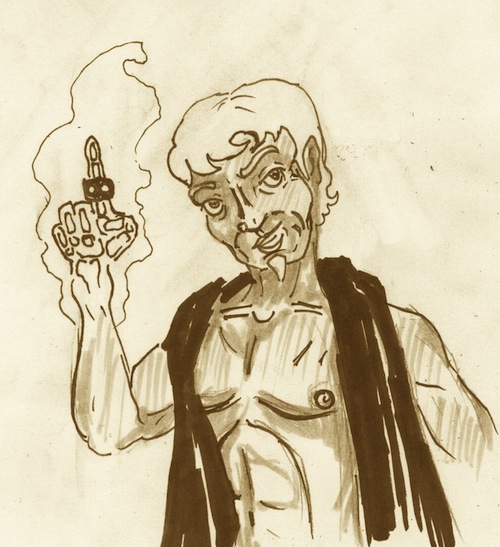
Azafont of the Brass Tower (Staff of Beguiling)
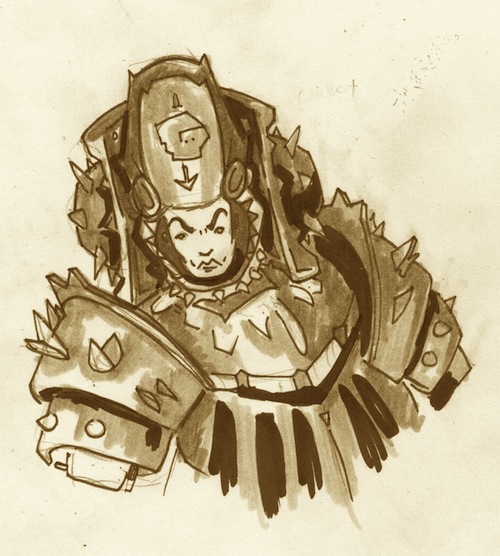
Queen Gorbex (Staff of Command)
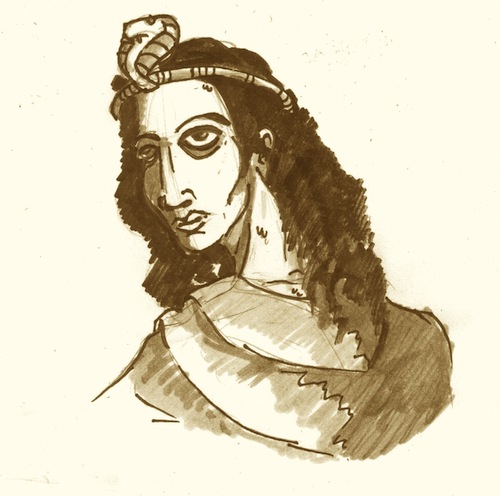
Sathifor the Corruptor (Staff of the Snake)
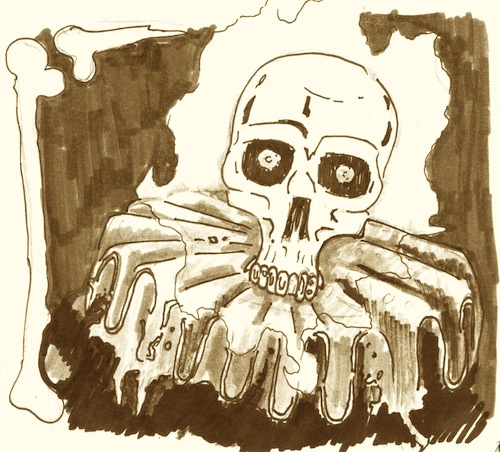
Magaitand, the Liche (Staff of Withering)
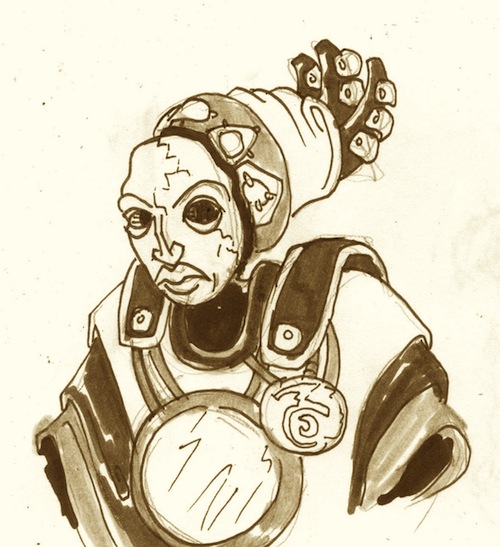
Sambasmyr the Wanderer (Staff of Healing)
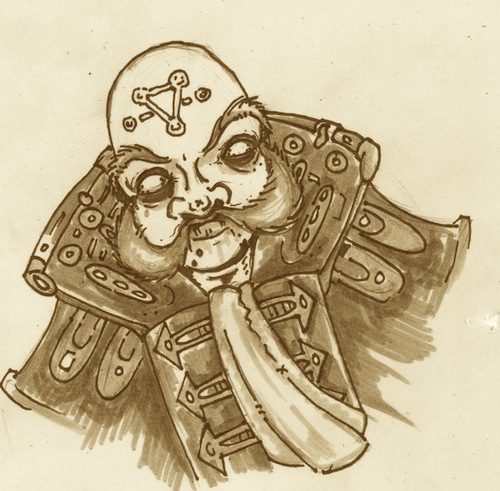
Mendo, master of the ancient flying machine
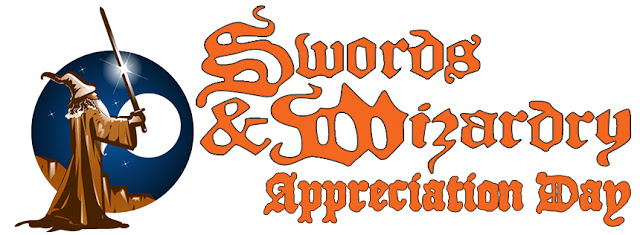
Swords & Wizardry Appreciation Day

